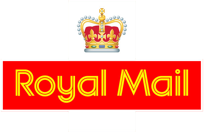Upgrading to Digital Combination Locks (DCL’s): What to consider when moving from a conventional keyed system to an electronic solution.
In modern spaces such as offices, leisure centres, schools and gyms, secure storage is essential — but convenience and control are becoming just as important. Many organisations are now upgrading their traditional cylinder key locks to electronic combination locks. Whether you’re managing a small staff locker area or a large bank of public-use lockers, switching to an electronic system can significantly improve both user experience and security.
At Fast Key Services Ltd (FKS), we specialise in helping businesses make this transition smoothly and effectively. Here’s what you should consider when replacing your existing keyed locker locks with electronic alternatives — and why the switch could be one of the best investments you make.
1. Assessing Your Existing Lockers
Before replacing your locks, it’s essential to review your existing locker setup. Factors to consider include:
- Lock type and fixing method: Are your current locks cam locks, latch locks, or hasp & staple types?
- Locker door thickness: Electronic locks often require different barrel lengths or fitting methods.
- Power/wiring: No complex wiring required as most DCL’s tend to be battery powered, with some innovative models that are battery-free.
- Usage environment: Consider moisture, temperature, and foot traffic — lockers in wet areas such as swimming pools need locks rated for high humidity.
A professional assessment from Fast Key Services ensures that the replacement locks fit perfectly and function reliably.
2. Benefits of Electronic Combination Locks
-
No More Lost Keys
Key management can be time-consuming and expensive. Electronic locks eliminate the need for physical keys, reducing administration and replacement costs. -
Enhanced Security
Many electronic systems offer audit trails, time-limited access, or master codes — giving you far greater control over who can access each locker and when. -
Flexibility and Convenience
Users can easily reset their own PIN codes, or administrators can reprogram locks without needing to replace cylinders. This makes electronic systems ideal for multiple users or shared access. -
Seamless Integration
Certain models can integrate with RFID cards or smartphone apps, streamlining access across your organisation and aligning locker security with your wider access control systems.
3. Choosing the Right Electronic Lock
Not all electronic locks are the same. When selecting your new system, consider:
- User type: Staff, customers, or both?
- Lock operation: Combination keypad, RFID, or app-controlled?
- Security level: Basic code entry or advanced audit trail features?
- Battery life & maintenance: Some locks do not require batteries; those that do typically offer low-battery alerts and easy access for replacement.
At Fastkeys, our experienced team can help you find the most suitable lock for your lockers, environment, and budget — ensuring a seamless upgrade from your existing keyed setup.
4. Why Choose Fast Key Services
With decades of experience in lock and key solutions, Fast Key Services are ideally positioned to support your transition to electronic locker systems. We stock and supply a wide range of DCL’s from leading manufacturers and provide expert advice, fitting guidance, and after-sales support.
Whether you need a like-for-like replacement or a completely new system, our team ensures a smooth, hassle-free process from start to finish.
Final Thoughts
Upgrading to electronic combination locks is a smart move for any organisation looking to modernise its security, streamline management, and enhance user experience.
If you’re considering replacing your existing cylinder key locks with electronic options, Fast Key Services can provide the products, expertise, and support you need.
Contact our team today to discuss your requirements or explore our full range of electronic locker locks.







